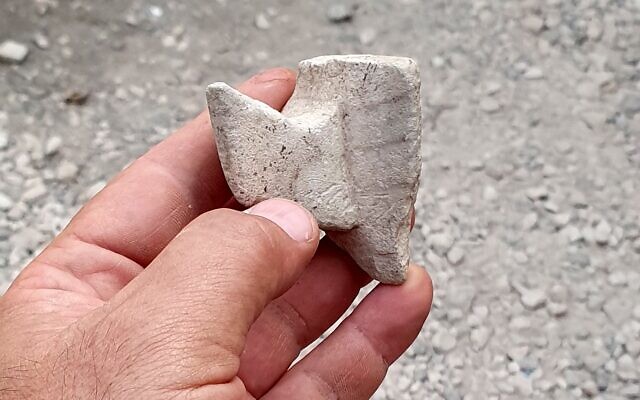JERUSALEM (VINnews) — In a landmark archaeological discovery, the Israel Antiquities Authority announced Monday that it had discovered remains of a building in Yavne from the period of the Sanhedrin. Yavne was the main religious center where the Sanhedrin relocated under Rabban Yochanan Ben Zakai after the destruction of the Second Temple.
“For the first time ever in Yavne, the excavations discovered an industrial building dating from the 1st–3rd centuries CE,” the IAA said in a statement.
Inside the building, archaeologists found chalkstone cups that the IAA said were “clear evidence that its occupants were observing Jewish laws of ritual purity,” since only Jews would use stone utensils which do not become contaminated.
“The floor contained several fragments of stoneware known as ‘measuring cups,’ vessels that retain their ritual purity and are identified with the Jewish population in the late Second Temple period and 2nd century CE,” the announcement added.
IAA Yavne excavation Pablo Betzer and Daniel Varga called the discovery “a direct voice from the past, from the period when the Jewish leadership salvaged the remaining fragments from the fall of the Temple, went into exile in Yavne, and set about re-establishing the Jewish people there.”
A cemetery from the same period was also discovered 70 meters from the building, which is located close to a large Byzantine-era wine press that was previously found at the site. At that distance the graveyard would likely have been outside the boundaries of the ancient city, in accordance with Jewish and Roman law, the researchers said.
The careful arrangement of tombs at the site probably indicated there was “some official body that was responsible for burial.” Most of the sarcophagi found at the site are made of stone, but one was of lead.
Because there are no ethnic symbols on the coffins, archaeologists have not yet determined if those interred in them were Jews or pagans, but “archaeological finds raise the possibility that these are the tombs of the city’s Jewish community,” said the statement.
“If this hypothesis is correct, then at least some of the tombs, perhaps the most elaborate, may belong to the sages of Yavne, contemporaries of Rabban Yohanan ben Zakkai, Rabbi Akiva and Rabban Gamliel,” the archaeologists said, naming three of the most famous rabbis of the Mishna and Talmud.
The cemetery also provided a surprising find, with over 150 glass vials discovered on top of the tombs.
Yael Gorin-Rosen, head of the Israel Antiquities Authority’s glass department, suggested that the vials were likely to hold precious liquids such as fragrant oils. Half the vials appeared to be locally produced, and the rest imported from Alexandria in Egypt.
“Vials of this type have been recovered in excavations at both Jewish and pagan burial sites from the 1st to the early 3rd centuries CE,” she said. “It is a mystery why the vials were placed outside the tombs in Yavne and not inside them, as was usual.”
Yavne was a prominent city even prior to the destruction of the Second Temple and is mentioned numerous times by Josephus. According to Jewish tradition, Rabban Yochanan Ben Zakai fled Jerusalem before the destruction and obtained permission from Vespasian to continue the Sanhedrin in Yavne. Yavne maintained prominence after the destruction until the Bar Kochba rebellion.
“It can be said that the foundations of Judaism as we know it today were laid in Yavne,” the IAA statement said.
“It is exciting to see ancient accounts of the Sanhedrin translated into actual evidence in the field, with vessels, installations and buildings,” said Eli Eskozido, director of the Israel Antiquities Authority. “We are sure that Yavne has not yet had the last say. Wherever archaeologists scrape the surface here, they encounter a find of national importance, with all that that entails.”
During the eight-day Hanukkah festival, which began Sunday night, the IAA is holding Israel Heritage Week events, which include tours of the Yavne site.
Archaeological work began at the site due to development work to expand the modern city of Yavne which was initiated by the Israel Lands Authority and the Yavne Municipality.






